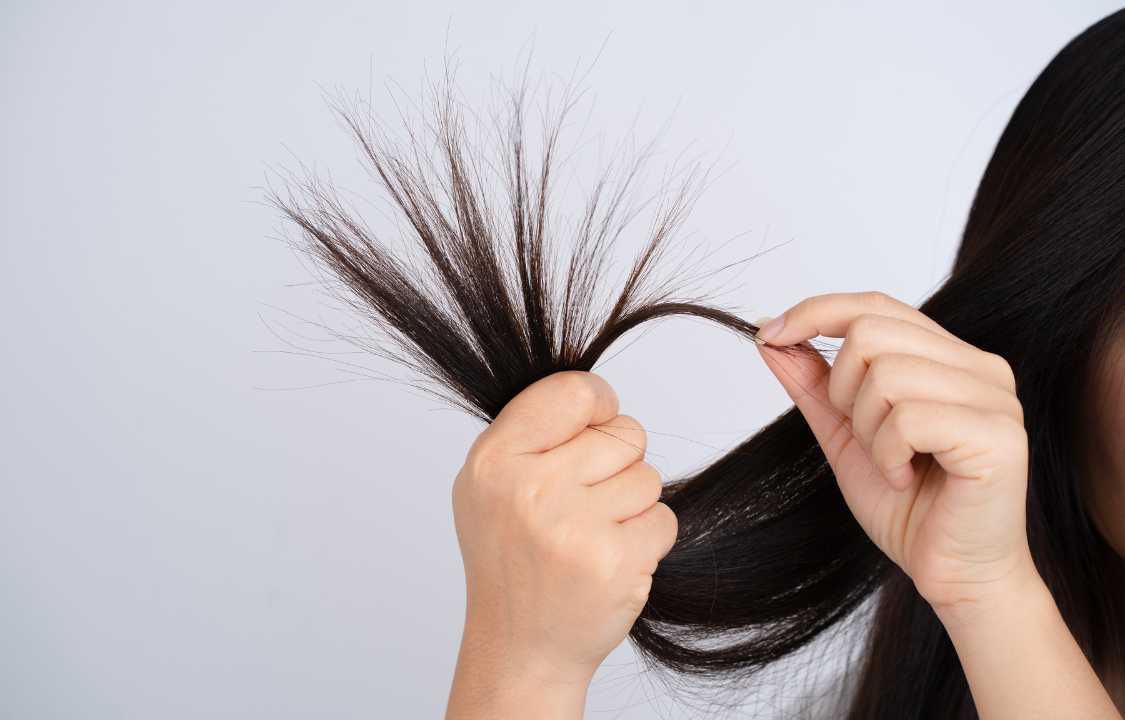Health Care, Insight
What to Know About Split Ends
Your hair, a crowning glory for people of all races, ages, and genders, can sometimes encounter a common nemesis – split ends. Split ends do not discriminate; they can manifest in any hair type. Hair, despite its inherent strength, is not immune to the wear and tear of daily life. Split ends, the telltale sign of hair damage, are the result of the hair shaft splitting, leading to weak and vulnerable strands. Understanding what causes split ends and how to prevent and address them is crucial for maintaining a lustrous and healthy mane.
Unraveling the Mystery of Split Ends
In the quest for beautiful hair, individuals often turn to various products that promise to enhance hair health. Paradoxically, some of these products may exacerbate the problem rather than provide a solution. When damage occurs, hair becomes fragile, prone to breakage, and susceptible to split ends. Untreated, this damage can lead to undesirable consequences such as hair thinning and bald spots.
What Precisely Are Split Ends?
Split ends, scientifically known as trichoptilosis, are hair shafts that have become damaged and frayed, often at their ends. This damage results in a weakened structure, leaving the hair susceptible to further splitting. These undesirable conditions contribute to hair appearing unhealthy and frizzy. As split ends progress, they may even hinder hair growth and lead to hair breakage.
The Culprits Behind Split Ends
Numerous factors and habits can contribute to the formation of split ends, including:
- Rigorous Shampooing: Rubbing shampoo vigorously throughout the hair during washing can weaken the hair shaft.
- Skipping Conditioner: Failing to use conditioner, which helps in moisturizing and protecting the hair, can leave it more susceptible to damage.
- Chemical Exposure: Contact with harsh chemicals, such as those found in swimming pools or some hair treatments, can compromise hair health.
- Aggressive Drying: Using a towel to rub hair dry can create friction and harm the hair.
- Wet Hair Brushing: Brushing wet hair, when it’s most fragile, can lead to mechanical damage.
- High Heat Styling: Frequent use of blow dryers, hot combs, and curling irons on high settings can cause heat-related damage.
- Long-lasting Styling Products: The application of long-lasting hair styling products may have adverse effects on hair health.
- Tight Hairstyles: Styles like tight ponytails, buns, braids, or updos can put excessive strain on hair.
- Extensions and Weaves: Hair extensions and weaves can lead to mechanical damage.
- Professional Hair Treatments: Procedures like perming, coloring, or relaxing hair can result in damage.
- Overbrushing: Aggressive and frequent brushing can weaken hair strands.
Besides these habits and factors, split ends can also occur due to environmental, nutritional, and genetic causes.
Spotting Split Ends: Types and Characteristics
While split ends share a common trait – hair splitting at the tips – there are several types with distinct characteristics. Understanding these types is essential for recognizing and addressing the issue:
1. Double Split Ends: The most common type, featuring a Y-shaped split that results from cuticle wear and tear due to over-styling or overbrushing.
2. Partial Split Ends: Similar to double splits but on a smaller scale, usually occurring in dry and damaged hair.
3. Tree Split Ends: Hair strands split into multiple places, resembling branches of a tree, indicating damaged hair.
4. Fork Split Ends: Exhibiting a fork-like shape with three splits, which occurs when the hair lacks proper hydration.
Regardless of the type, split ends are unmistakably signs of hair damage and should be addressed promptly.
Are Split Ends a Cause for Concern?
Split ends are indeed a cause for concern, indicating compromised hair health. They can impede hair growth and lead to hair breakage, further weakening the hair structure.
Battling Split Ends: Treatment and Prevention
While various products claim to mend split ends, they offer limited help. No miraculous treatment exists for split ends, and the only effective approach is to trim the hair. Trimming prevents the splits from progressing further up the hair shaft, minimizing damage.
Preventing Split Ends
Though split ends cannot be entirely reversed, prevention is the key. Here are several strategies to safeguard your hair from developing split ends:
1. Limit Washing: Avoid daily hair washing, as it strips away natural oils that moisturize the hair. Washing every two or three days is generally sufficient.
2. Mindful Brushing: Use a brush with flexible bristles or a cushioned paddle, and start by detangling the ends before proceeding gently up the strands. Brush wet hair with a wide-toothed comb only.
3. Gentle Shampooing: Apply shampoo to the scalp and let it naturally disperse down the hair as you rinse, providing adequate cleansing without harsh scrubbing.
4. Condition Ends First: Prioritize conditioning the ends of your hair, allowing the conditioner to sit for a few minutes to ensure thorough absorption.
5. Gentle Towel Drying: Avoid twisting or scrubbing your hair with a towel. Instead, gently squeeze or scrunch hair to remove excess water.
6. Minimal Heat: Use heated styling products, like blow dryers, on the midsection of hair rather than the ends. When using curling irons, avoid excessive heat on the tips.
7. Hair Styling: When using heated styling tools, protect the ends from excess heat exposure by styling hair from root to tip gradually.
8. Regular Trims: Scheduling hair trims every six to eight weeks is vital for maintaining healthy hair and addressing emerging split ends.
By adhering to these preventive measures and embracing regular trims, you can maintain the health and vitality of your hair, minimizing the occurrence of split ends.
Understanding the causes and solutions for split ends empowers you to take better care of your hair. While split ends can’t be entirely eliminated, with the right practices and routines, you can enjoy healthier, more resilient hair.

